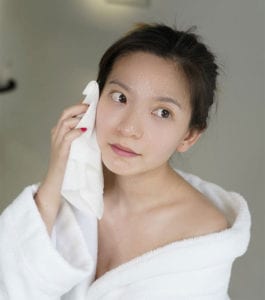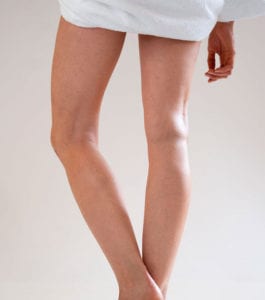Arthritis
Introduction

Anatomy
Causes
There are over 100 different types of arthritis. Arthritis can occur for many reasons, including aging, “wear and tear,” autoimmune disease, trauma, and inflammatory disease. Arthritis usually affects the bones and the joints; however, it can affect other parts of the body, such as muscles, ligaments, tendons, and some internal organs. Two of the more common types of arthritis, Osteoarthritis and Rheumatoid Arthritis are discussed below.
Osteoarthritis is the most common type of arthritis, affecting some 21 million Americans alone. It causes the cartilage covering the end of the bones to gradually wear away, resulting in painful bone on bone rubbing. Abnormal bone growths, called spurs or osteophytes can grow in the joint. The bone spurs add to the pain and swelling, while disrupting movement. All of the joints may be affected by Osteoarthritis.
Osteoarthritis is often more painful in the weight bearing joints, including the spine, hip, and knee. It tends to develop as people grow older. Osteoarthritis can occur in young people as the result of an injury or from overuse of a joint during sports or work.
Rheumatoid Arthritis is one of the most serious and disabling types of arthritis. It is a long-lasting autoimmune disease that causes the synovium to become inflamed and painful. It also causes joint swelling and deterioration. Pain, stiffness, and swelling are usually ongoing symptoms, even during rest.
Rheumatoid Arthritis most commonly occurs in the hand and foot joints. It can also develop in the larger joints, including the hip, knees, and elbows. Many joints may be involved at the same time. Further, tissues surrounding the joint may also be affected. Rheumatoid Arthritis can affect people of all ages, but most frequently occurs in women and those over the age of 30.
Symptoms
Inflammation is the main finding of arthritis. Inflammation can cause your joints to feel painful, swollen, and stiff. These symptoms are most likely continuous, even when you are resting. Your joints may feel weak or unstable. You may have difficulty moving and performing common activities, such as walking or climbing stairs.
Diagnosis
X-rays are used to see the condition of your bones and joints, and to identify areas of arthritis or bone spurs. The tissues that surround the joint do not show up on an X-ray. In this case, a Magnetic Resonance Imaging (MRI) scan may be requested to get a better view of the soft tissue structures, such as ligaments, tendons, and cartilage.
Treatment
Occupational or physical therapists can help you strengthen the muscles surrounding your joint. The resulting added joint stability can help relieve pain. Aquatic therapy in a heated pool can be especially soothing. In addition, the buoyancy of the water takes stress off the joints while exercising, and the resistance of the water can help strengthening efforts. Your therapists may also apply heat to treat stiffness, and ice to decrease pain. They may recommend splints, walkers, or canes to help relieve stress on your joints. The therapists will instruct you on how to do your daily activities, such as housework and meal preparation, in a manner that puts less stress on your joints.
Surgery
There are several types of surgical procedures for arthritis. The surgeon may remove the diseased or damaged joint lining (synovium) in an operation called a synovectomy. The bones in a joint may be realigned with a procedure called an osteotomy. The bones in a joint may also be fused together to prevent joint motion and relieve pain.
In advanced arthritis, the damaged joint can be replaced with an artificial one. Artificial joints are made of metal, plastic, ceramics, or a combination of the materials. The material selected depends on the reason for the surgery, as well as which joint is being replaced. Joint replacement can provide significant pain relief and improved mobility.
Recovery
Generally, traditional open joint surgeries take several months to heal, depending on the joint. Minimally invasive surgery and arthroscopic surgery use smaller incisions and typically heal in a shorter amount of time, from several weeks to a few months. Your doctor may restrict your activity for a short time following your surgery. In most cases, rehabilitation is recommended to mobilize and strengthen the joint.
Prevention
Assistive devices, such as a walker, shower chair, or raised toilet seat may enable you to perform tasks while minimizing the stress on your joints. It may also be helpful to participate in aquatic therapy in a heated pool or exercise to keep your joints strong.

Copyright © - iHealthSpot Interactive - www.iHealthSpot.com
This information is intended for educational and informational purposes only. It should not be used in place of an individual consultation or examination or replace the advice of your health care professional and should not be relied upon to determine diagnosis or course of treatment.
The iHealthSpot patient education library was written collaboratively by the iHealthSpot editorial team which includes Senior Medical Authors Dr. Mary Car-Blanchard, OTD/OTR/L and Valerie K. Clark, and the following editorial advisors: Steve Meadows, MD, Ernie F. Soto, DDS, Ronald J. Glatzer, MD, Jonathan Rosenberg, MD, Christopher M. Nolte, MD, David Applebaum, MD, Jonathan M. Tarrash, MD, and Paula Soto, RN/BSN. This content complies with the HONcode standard for trustworthy health information. The library commenced development on September 1, 2005 with the latest update/addition on February 16, 2022. For information on iHealthSpot’s other services including medical website design, visit www.iHealthSpot.com.






